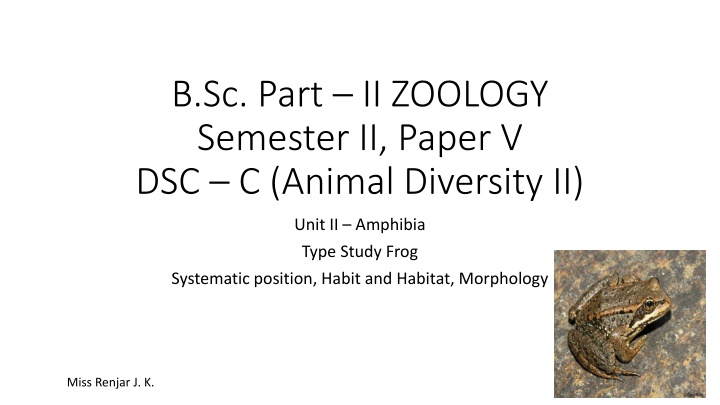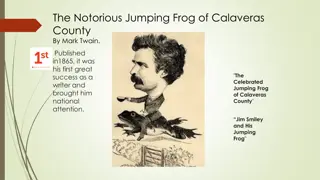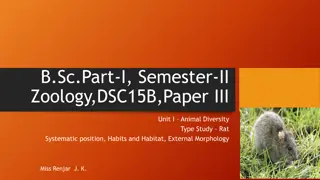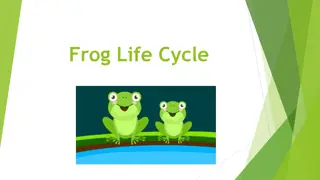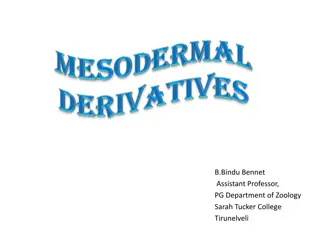Morphology, Habitat, and Habits of the Frog - A Study on Amphibia
The frog, belonging to the genus Rana in the family Ranidae, is a cold-blooded amphibian found near water bodies. Its skin needs to be kept moist for respiration, and it undergoes hibernation in winter and aestivation in summer. The body is bilaterally symmetrical with distinctive features like a broad head, protruded eyes, absent neck, and fusion of head and trunk. Camouflage, tongue adaptation, and limb structure aid in survival.
Download Presentation

Please find below an Image/Link to download the presentation.
The content on the website is provided AS IS for your information and personal use only. It may not be sold, licensed, or shared on other websites without obtaining consent from the author.If you encounter any issues during the download, it is possible that the publisher has removed the file from their server.
You are allowed to download the files provided on this website for personal or commercial use, subject to the condition that they are used lawfully. All files are the property of their respective owners.
The content on the website is provided AS IS for your information and personal use only. It may not be sold, licensed, or shared on other websites without obtaining consent from the author.
E N D
Presentation Transcript
B.Sc. Part II ZOOLOGY Semester II, Paper V DSC C (Animal Diversity II) Unit II Amphibia Type Study Frog Systematic position, Habit and Habitat, Morphology Miss Renjar J. K.
Systematic position Phylum Chordata Sub-phylum Vertebrata Super Class Gnathostomata Class Amphibia Order Anura Family Ranidae Genus Rana Species - tigrina
Habits and Habitat The habitat of frog is usually near water. The skin of the frog is to be kept moist. This is essential for skin respiration. When skin tends to be dry it takes a dip into water. The frog is a cold blooded animal. It s body temperature varies with the temperature of surrounding. During winter the frog is unable to generate enough heat. It undergoes the winter sleep or hibernation. Just a winter sleep, Indian frog has been summer sleep. It is called aestivation.
Morphology The body of frog is bilaterally symmetrical and dorsoventrally flattened. Body is divisible into head and trunk. There is no neck and tail. Skin color of frog Is green with black or brown patches dorsally. Ventrally it is light pale yellow in color with no spots. Head is broad and triangular in shape. The two large protruded eyes are placed on head dorsally. Each eye is protected by three eyelids namely upper eyelid, lower eyelid and a nictitating membrane.
Neck is completely absent, as in the aquatic vertebrates fusion head and trunk is a special adaptation for swimming. Tongue is the basic tool of hunting the prey which is always kept ready to snap at moving prey. Trunk is flat and ovoid, continuous with the head in front. The trunk bears laterally two pairs of limbs of very unequal size. Camouflage in frog is a defensive mechanism which assists them in hiding. Hibernation and aestivation are the winter sleep and summer sleep of frog respectively which is the peculiar style of adaptation for survival.
